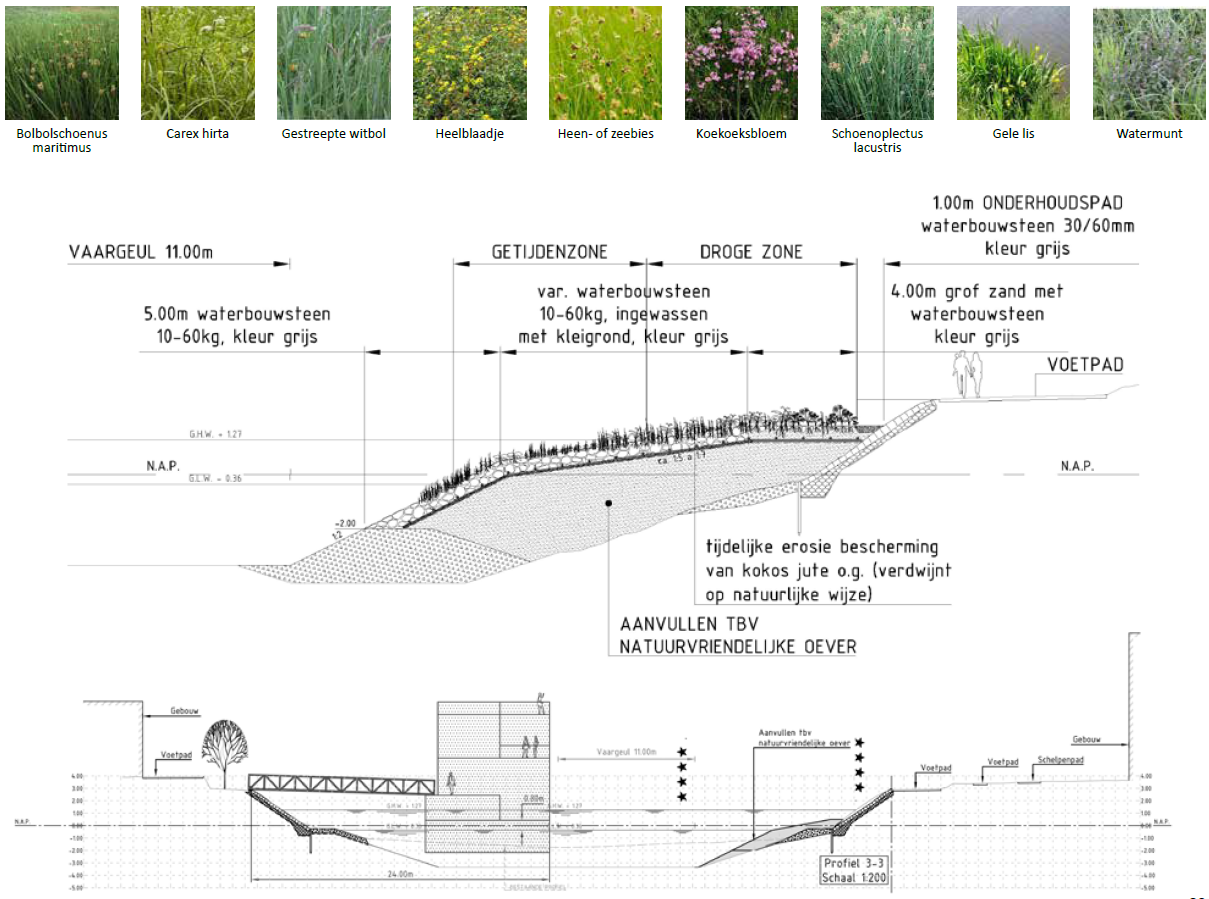Planning and design
In the beginning of the exploration phase, typical elements within a river system were linked to Building with Nature-type interventions (see table) to inspire urban designers and landscape architects in the first phases of the projects. Later on, during a system analysis, the physical and ecological processes that direct the design considerations were taken into account in more detail.
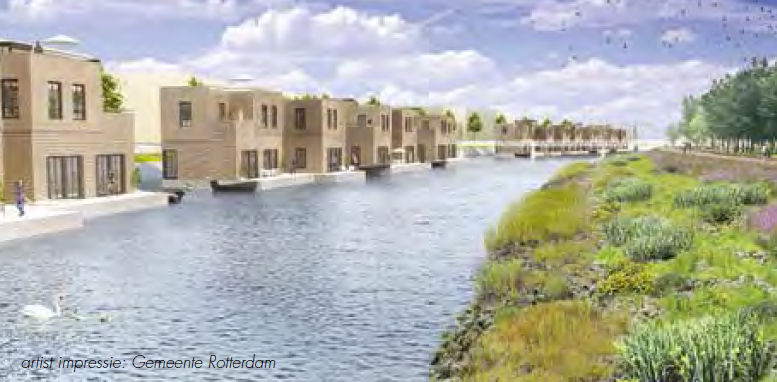
(image taken from Van den Berg, 2018)
In the pilot Wervenpark Dordrecht, a park is designed in which a part will have a traditional park layout while a lower lying part will develop as tidal area. In the pilot Mallegatpark a tidal channel is constructed in connection with the recently redesigned park on shore with the goal to increase the experimental and natural value of the park and its surroundings (Van den Berg, 2018).
In the Nassauhaven pilot, a nature friendly riverbank is constructed in the Nassauhaven alongside the existing Nassauhaven park. At this location 18 floating houses will be constructed as well (Van den Berg, 2018). The goal of the nature friendly river bank is to increase the experimental and natural value of the park and harbour and to contribute to ecological processes.
Exploration
System analysis was performed regarding physical, ecological, governmental and social aspects. For Wervenpark Dordrecht, the system analysis was done by a desk study, field trips and interviews with several stakeholders (De Jong and Van Geest, 2014). The municipality defined the locations based on nature measurements. Financial feasibility was an important criterion.
A less in-depth physical system analysis has been carried out for the tidal river ranging from the North Sea till the Island of Dordrecht (De Jong et al., 2015a) including both the pilot of Dordrecht and the pilots in Rotterdam. One of the results that proved very helpful in the communication between the consulting companies and the municipality of Rotterdam was a map and a table (see images below) which linked typical river elements with possible Building with Nature-type interventions.
Though it is a strong simplification of the actual physical and ecological processes that direct the designing considerations, it facilitated the communication between the urban designers and landscape architects in the first phases of the project. It contributed to the general vision on what might potentially be feasible.
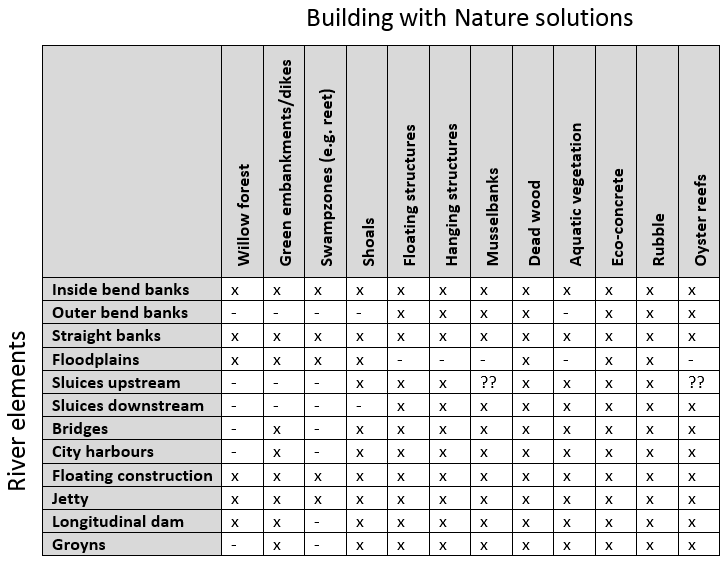
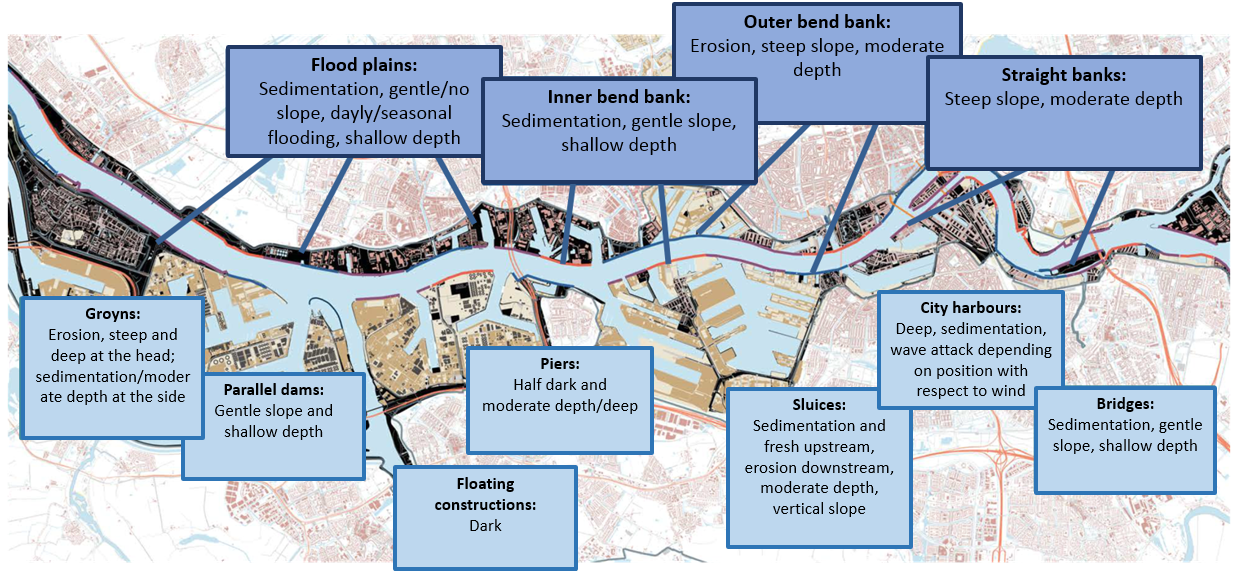
Approach
Pilot Wervenpark Dordrecht
The design phase for the Dordrecht pilot was mainly carried out by urban architects, ecologists, hydro-morphologists and engineers from both the municipality of Dordrecht and consultancy firms. Several design sessions with the specialists have been organised. Their work was integrated in several meetings between the project leaders and bilateral consultation between the specialists. Also, several meetings with stakeholders were organised for the feasibility and design. Pilots Mallegatpark and Nassauhaven Rotterdam
For the pilots in Rotterdam a different approach was used which will probably be of use for a wider audience of designers and planners. In this approach multiple design sessions were organised with not only specialists on tidal ecology and hydrology, but also planners, designers, architects, citizen spokesman, project purchaser, permit manager, etc from the Rotterdam team and representatives of the programm partners.
During these design sessions innovative solutions have been invented for specific problems or desires that were put forward. On top of this, understanding and familiarisation with the Building with Nature approach and interventions was created among the urban team. Because of the participation of the Rotterdam team and the relevant specialists many of the boundary conditions could also be determined.
Issues that could not be addressed or explained during the sessions were given as ‘homework’ assignments to the responsible persons. They reported back to the project-manager well before the next meeting. This way, the design manager could incorporate the findings and agreements of the last design session in an improved version of the design.
Design
Pilot Wervenpark Dordrecht
For the pilot Wervenpark Dordrecht, a park was designed whereby a part will have a traditional (onshore) park layout while a lower lying part will develop as a tidal area. The design of the park is not finalized yet. Below, some considerations for the design are summarized and the current state of the design is explained.
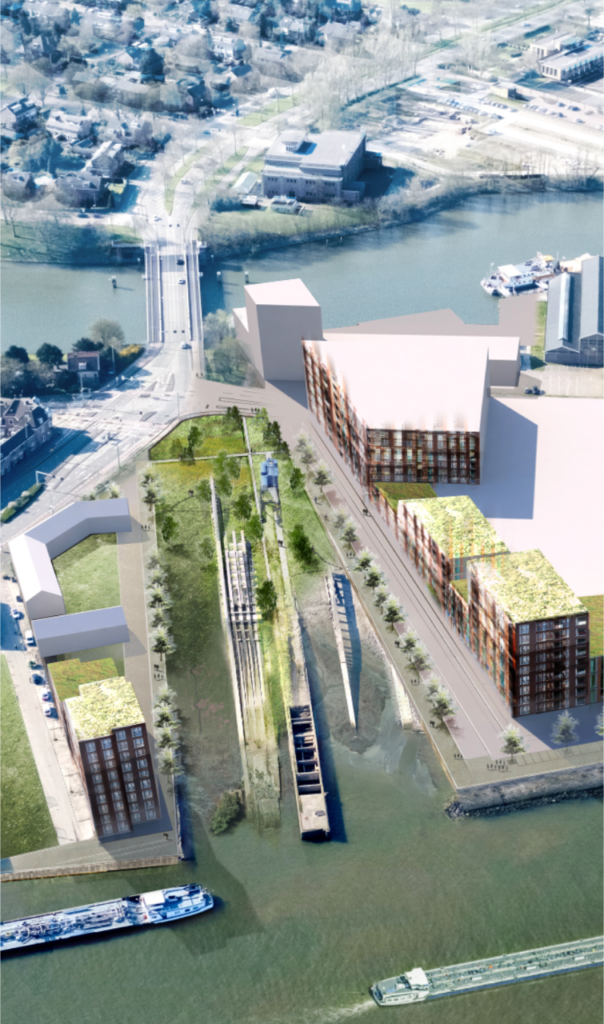
Impression of the tidal park in Dordrecht (provisional design) (source: Municipality of Dordrecht) 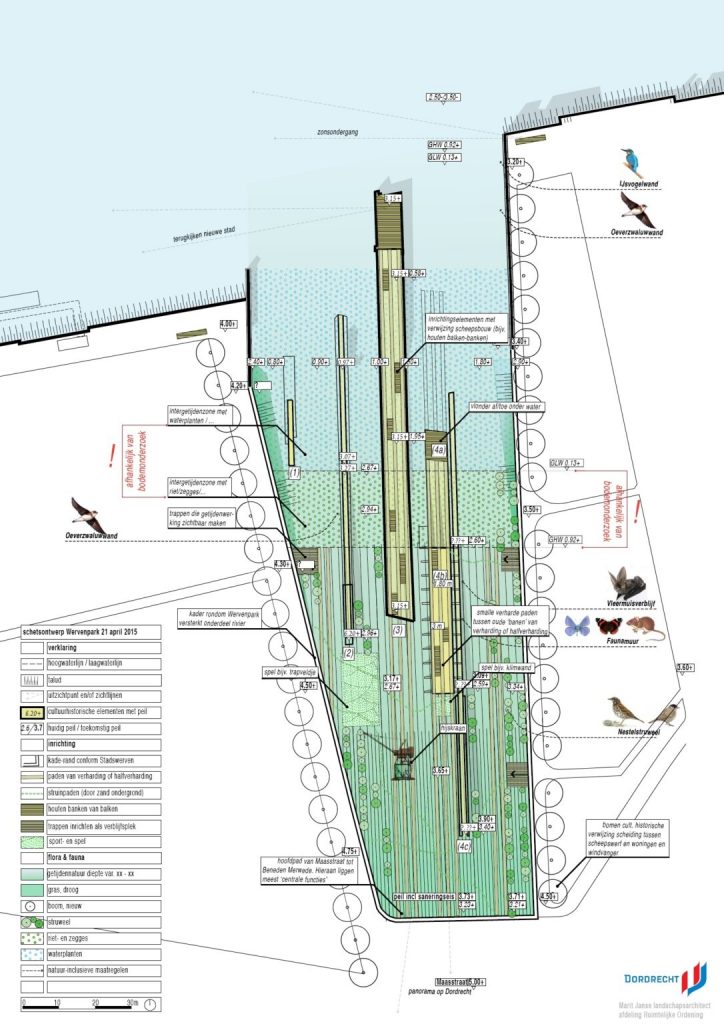
Provisional design Wervenpark Dordrecht (Jansen, 2015)
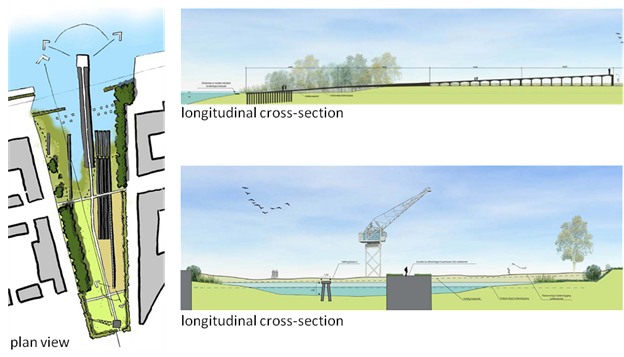
Considerations
To protect the tidal area against erosion by waves generated by passing ships it was planned to leave the existing foundation piles of the slipway in place as bank protection. However, during the excavation for the creation of the tidal area, it was found that no foundation piles were present even though they were shown on old construction drawings of the slipway. Therefore, other options for natural shore protection had to be explored during the construction phase.
Options for realising a swimming zone at the Wervenpark or in its direct surroundings were investigated. However, the flow velocity and the waves in de Merwede due to passing ships result in unacceptable safety risks. Therefore, the option for a swimming zone was cancelled.
Besides designs for the Wervenpark, also conceptual designs were made for a hybrid shoreline (combination of hard and soft materials) along the residential area where space is limited. These designs were found not feasible at the moment, but will be reconsidered at the moment that the present shoreline needs to be replaced for maintenance purposes, or in the future when new housing blocks will be realised.
Furthermore, an ‘underwater dam’ with dead tree trunks was designed to be constructed along the shoreline of the harbour next to the Wervenpark. This dam would provide living area for fauna and would break waves in front of the vegetated shoreline. However, this design is currently not feasible as the long term ambitions for the harbour are uncertain.


Current state of the design
At the moment (June, 2018), a provisional design (‘voorlopig ontwerp’) of a barrier along the sides of the Wervenpark (reinforced ground with side wall) lies with the client for approval. There is a proposal from the client to investigate in more detail the refurbishment of the ramps and the costs of this option. The park layout will only be realised after the realisation of (directly) adjacent housing blocks.
Pilot Mallegatpark
A tidal channel will be constructed in the Nieuwe Maas in connection with the recently redesigned Mallegatpark (Van den Berg, 2018). The purpose of this tidal channel is to increase the spatial quality and natural value of the park and its surroundings. In the project, an extra dam along the bank will be constructed. This break dam has higher and lower parts allowing partial flooding of the area behind the barrier. Sedimentation will take place at the lee-side providing new habitat for tidal nature.
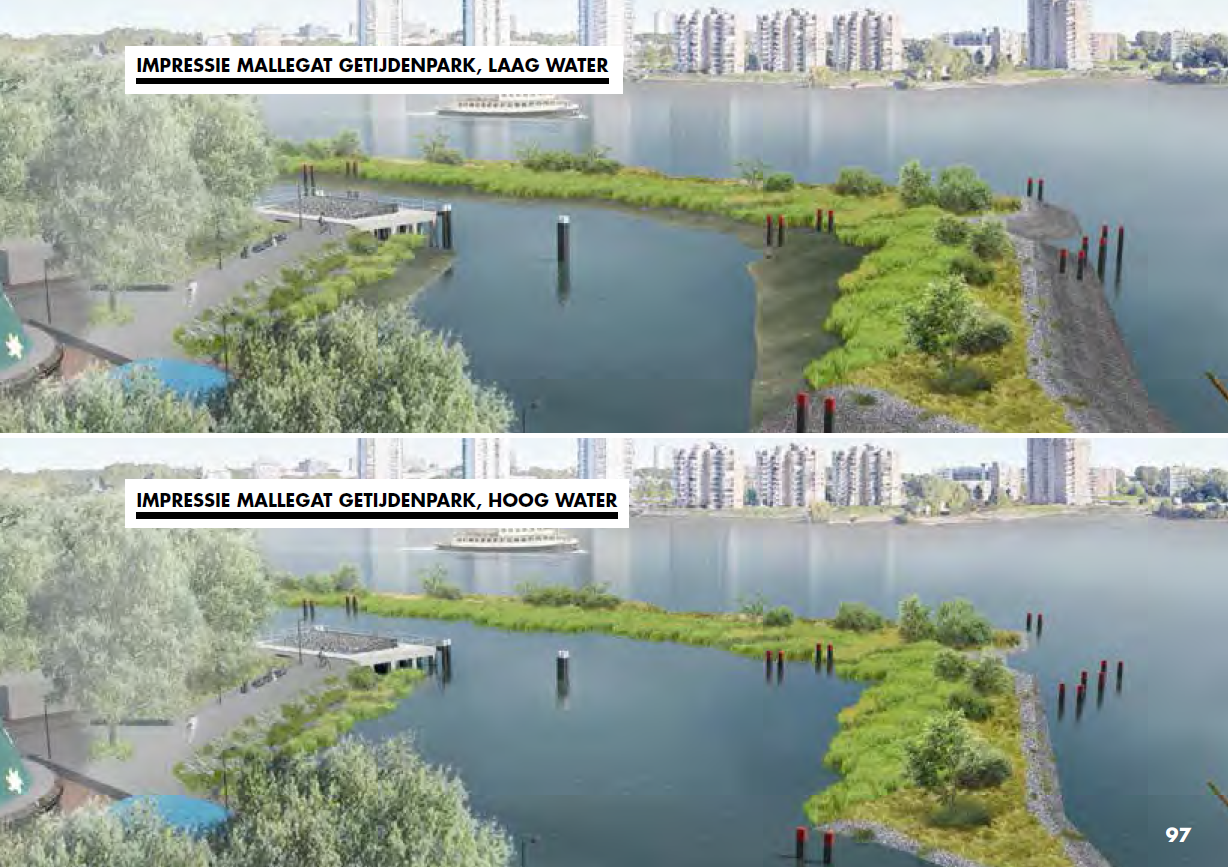
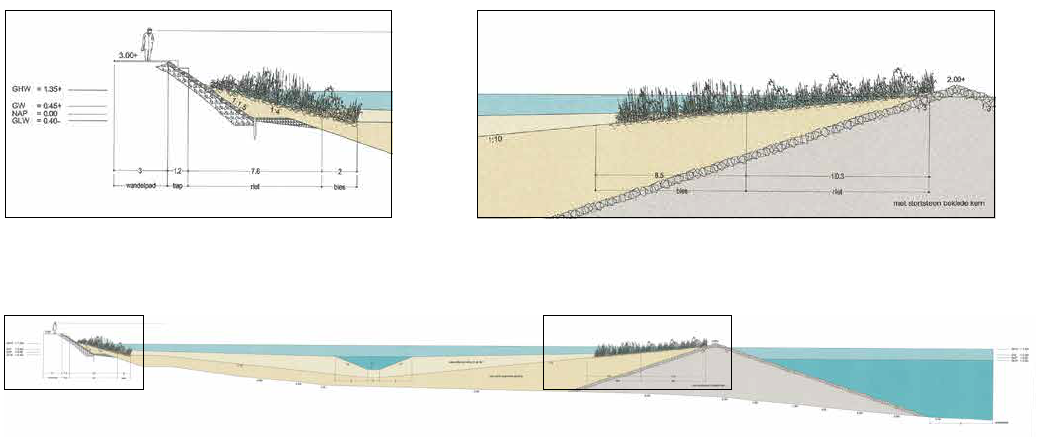
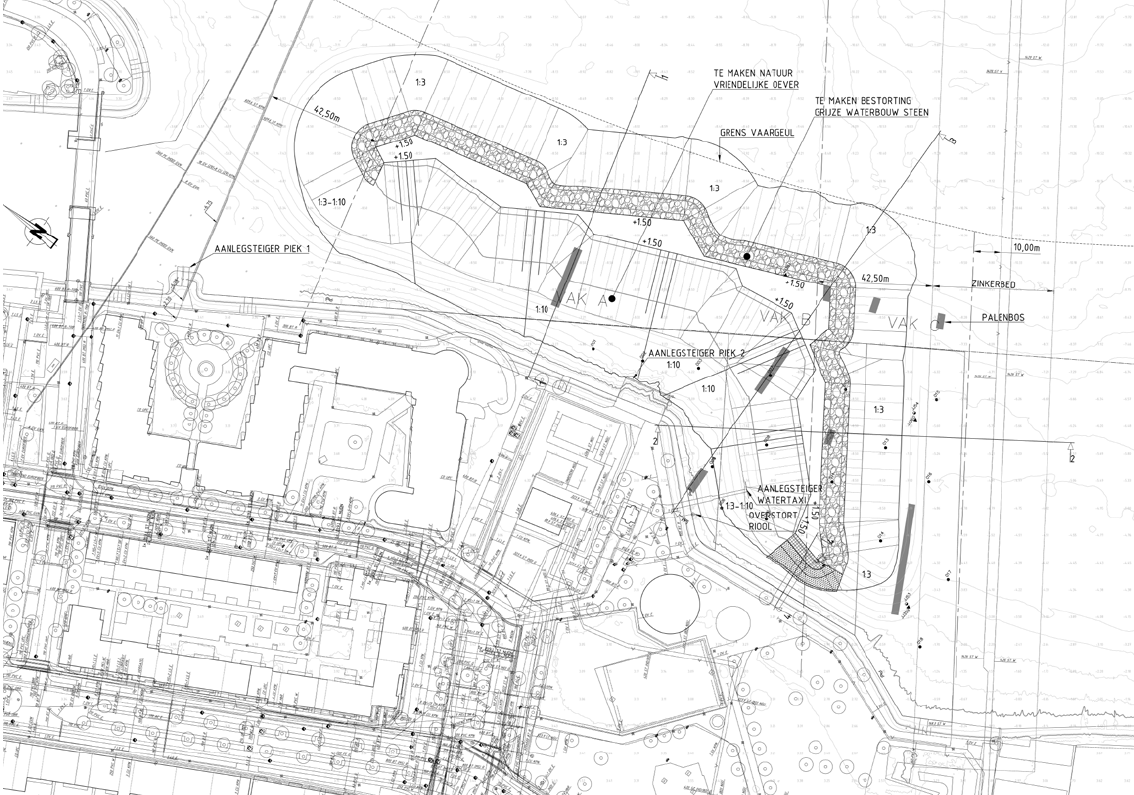
Pilot Nassauhaven
Alongside the existing Nassauhavenpark, a nature friendly riverbank is constructed along with the development of 18 floating houses (project “Havenloft”) in the Nassauhaven (Van den Berg, 2018). The goal of the nature friendly river bank is to increase the experimental and natural value of the park and harbour and to contribute to ecological processes.
The nature friendly river bank has a basis consisting of grey rock. In the tidal zone, the slope of this armoured surface is more gentle and a clay layer is added to/mixed with this rock basis. This gentle surface provides a good substrate for plants to grow.
